Last summer, I saw a few chestnut-sided warblers in the backyard. They were moving too quickly and I was unable to take any photographs, until now. I spotted a single male hunting for insects and I was quite excited at the chance of photographing this bird. Maine has been very good to me in regard to observing several types of warblers and I will be adding this chestnut-sided warbler to my Cornell Lab of Ornithology Birder’s Life List & Diary. Out in the field, this species of warbler can be quite easy to identify by its distinguishable markings, if you know what to look for. I would like to share some interesting facts and information about this warbler.
Chestnut-sided Warbler Information
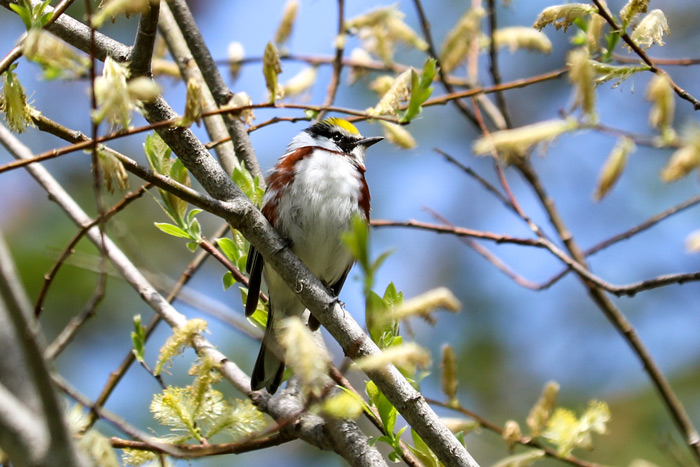
A perching male chestnut-sided warbler (Setophaga pensylvanica).
Description of the Chestnut-sided Warbler
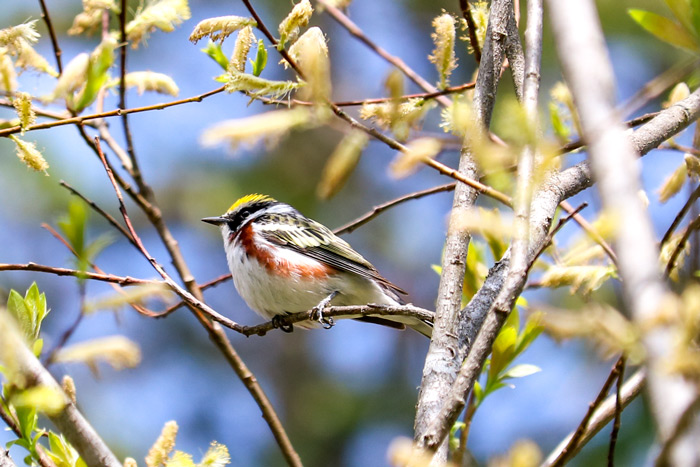
The chestnut-sided warbler is slim and moderately sized with a relatively long tail. Breeding adults are a crisp gray and white color with a yellow crown. The face has black markings, underparts are white, with distinctive chestnut flanks and they also have two white wing bars. Males are brighter in color than the females. In non-breeding birds, adults and immature birds, colors include a bright lime-green above with a white eyering, two wing bars and pale gray to white underparts.
Chestnut-sided Warbler Song & Call
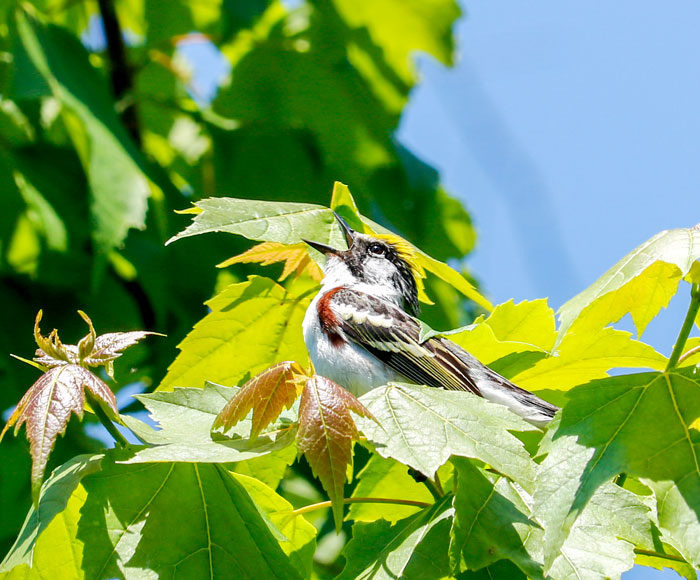
The most commonly heard call of the chestnut-sided warbler can be described as a rich, sweet chip, similar to that of a yellow warbler. Songs are high whistled lines often described as pleased, pleased, pleased to meecha or I wish to meet Miss Beecher!
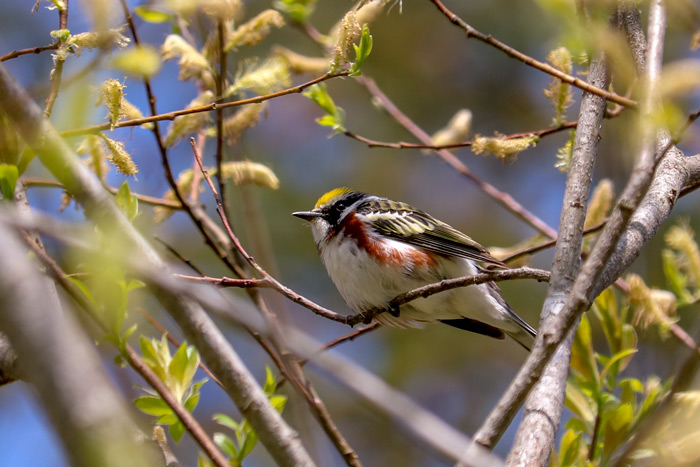
Chestnut-sided Warbler Behavior & Habitat
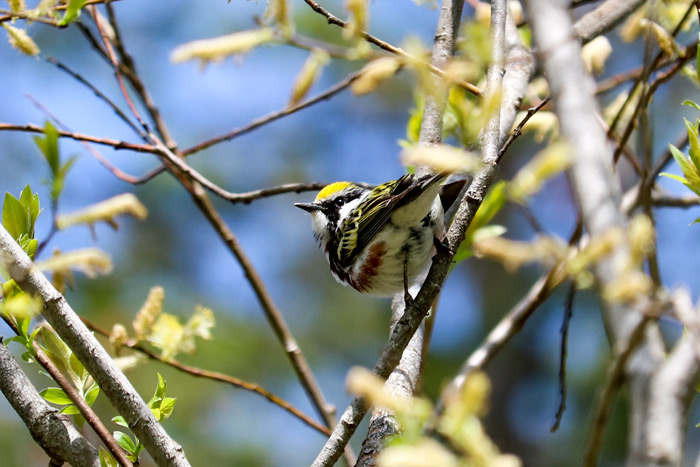
Chestnut-sided warblers can be found hopping on slender branches, inspecting the underside of deciduous leaves for insects. These birds will often raise their tails and drop their wings as they move through branches. They consume mostly insects, especially caterpillars and fly larvae, as well as spiders, locusts, cankerworms, and leafhoppers.
The chestnut-sided warbler has benefited from the clearing of mature woods, where small trees and shrubs have returned for a few years, after occurrences such as logging or wind storms. They can also be found in stunted highland oak forest at the southern end of their breeding range. Migrating and wintering birds can be found in a great variety of brushy, successional, and mature wooded environments.
Chestnut-sided Warbler Breeding & Nesting

The male will sing to defend its nesting territory. During courtship, the male displays for the female by fluffing its plumage and raising its yellow crown feathers. This bird also spreads and vibrates its wings and tail.
The cups-shaped nest is constructed in low dense shrubs, young deciduous woodland or scrubs. The nest is built by the female and is loosely constructed of cedar or grapevine bark strips, fibrous weeds, grasses, roots, and fine plant down, lined with fine grass and animal fur. Nests may be attached to twigs with spiderwebs.
There are usually four, sometimes three to five eggs. The eggs are whitish with brown markings and are incubated by the female for eleven to twelve days. Cowbirds will frequently lay eggs in the nests of these birds. Both parents fed the nestlings. The young will leave the nest about ten to twelve days after hatching.
Chestnut-sided Warbler Migration

The chestnut-sided warbler is considered a long-distant migrant. These birds mostly migrate at night. Peak migration occurs mostly during May and September. Chestnut-sided warblers arrive in their breeding range in May and depart by mid-September. Wintering warblers in Central America inhabit shaded-coffee plantations, scrubby edge habitats, successional habitats, and mature wet forest.
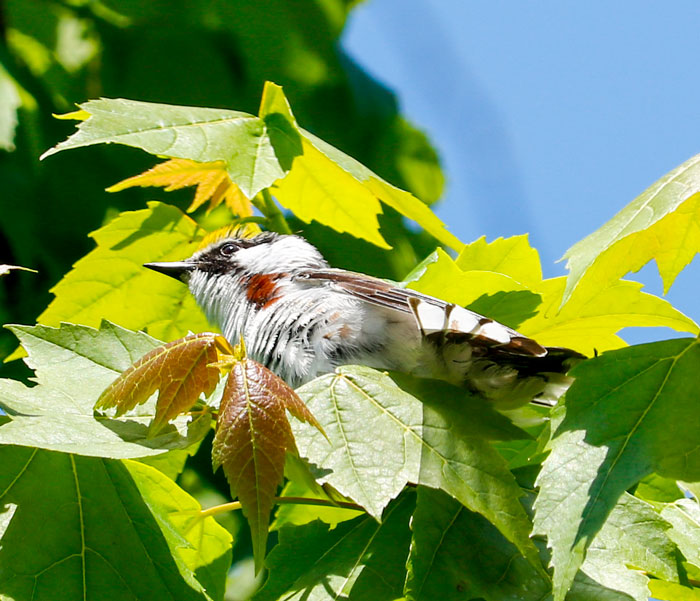
Thank you for reading and I hope you enjoyed learning a little about the chestnut-sided warbler.
Resources used for this post:
allaboutbirds.org & audubon.org
Leave a Reply